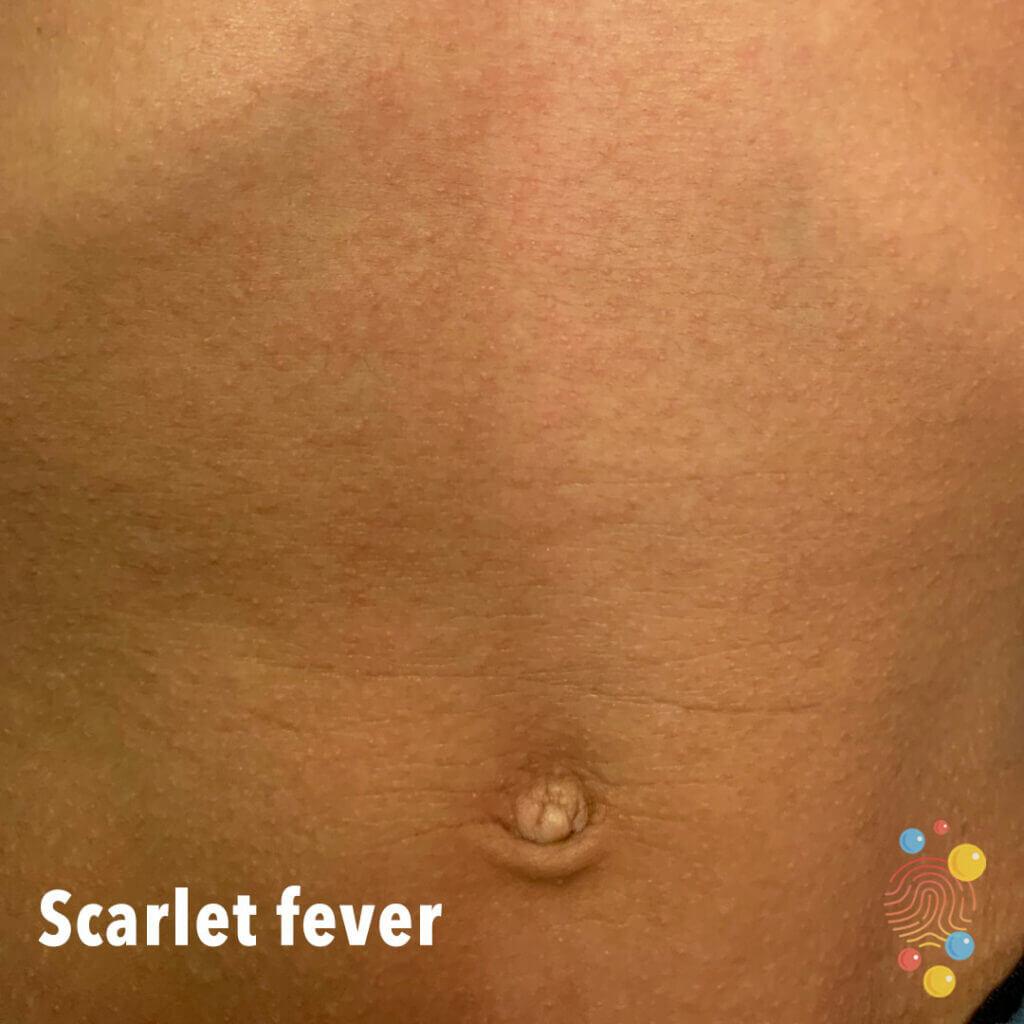This information is available in Urdu (اردو), Somali (Soomaali), Punjabi (ਪੰਜਾਬੀ), Bengali (বাংলা), Hindi (हिंदी), Portuguese (português), Ukrainian (український), Arabic (العربية), Polish (polskim) and French (français).
Strep A infections are common among children. Most strep A infections are not serious and can be treated with antibiotics.
But rarely, the infection can cause serious problems. This is called invasive group A strep (iGAS).
What should I look out for?
Common symptoms of strep A include:
- A rash with small spots on the body that spread to neck, arms and legs
- Sore throat
- Fever (temperature of 38C or above)
- Painful swelling in the neck
- A red tongue (also known as strawberry tongue)
The rash can be difficult to see on darker skin tones, but it can still have a sandpaper texture. The rash is more obvious in the groin/armpit area. Sometimes, the flushed cheeks appear as ‘sunburned’ on darker skin, with whiteness near the mouth.
The following images are shared with permission from DFTB Skin Deep.









If you think your child has a strep A infection, you should keep them at home and let your GP practice or NHS 111 know the same day. If a healthcare professional thinks that your child has a strep A infection, they will prescribe your child antibiotics. This reduces the chance of their infection becoming more severe and stops them spreading the infection to others.
What to do if your child is unwell
It can be difficult to tell when a child is seriously ill, but the main thing is to trust your instincts. You know better than anyone else what your child is usually like, so you’ll know when something is seriously wrong.
The green / amber / red information below tells you what to look out for and where to seek help. If you're reading this page on your mobile, you may need to scroll across to see the whole table.
| Green |
If your child does not seem to be seriously ill, you can usually look after them at home:
However, if your child has an underlying condition or another infection, such as chickenpox, it is important to be extra vigilant as they may be at greater risk of serious infection. |
Self care:
If you are still concerned about your child, call NHS 111 – dial 111. |
|---|---|---|
| Amber |
If your child has any of the following:
|
You need to contact a doctor or nurse today. Please ring your GP practice or call NHS 111 – dial 111 . |
| Red |
If your child has any of the following:
|
You need urgent help. Go to the nearest hospital emergency (A&E) department or phone 999 to call an ambulance. |
Treatment for strep A infection
Most strep A infections can be easily treated with antibiotics.
If you or your child has a strep A infection, you should stay away from nursery, school or work for 24 hours after starting to take antibiotics. This will help stop the infection spreading to other people.
The sore throat and fever often last for about 3-6 days and the rash usually improves within a week.
Top tips for taking care of your child
Monitoring
- You should watch them closely in case their condition gets worse.
- It’s important to trust your instincts if your child is unwell. Get medical help if you think you need it.
Feeding
- Babies may find it more tiring to feed so they should be offered shorter, more frequent feeds.
- Encourage children to drink plenty of fluids.
- In children over one, you can offer them a little bit of honey in a drink to soothe their throat.
Managing symptoms
- If your child is feeling uncomfortable, you can give them children’s paracetamol or children’s ibuprofen. Check the leaflet to make sure the medicine is suitable for your child and to see how much to give them.
- You can use saline drops in their nose to help break up any blockages, and raise the head end of their bed or cot.
- Visit ICON parent advice for soothing crying babies.
Avoid spreading infections
- Ensure your children are up to date with all vaccinations.
- Avoid contact with someone you know is infected.
- Wash hands often with soap and water.
- Cover your mouth and nose with a tissue when you cough or sneeze.
- Bin used tissues as quickly as possible.
